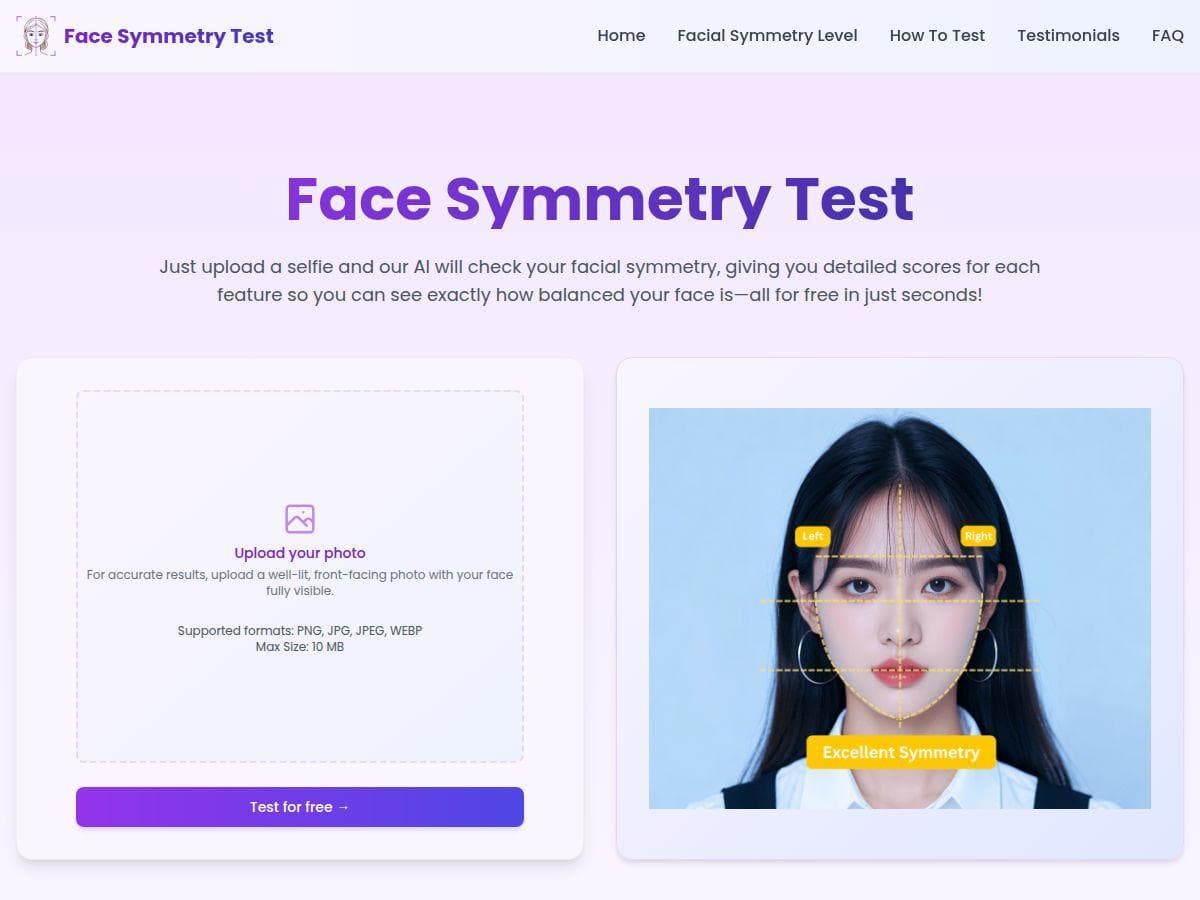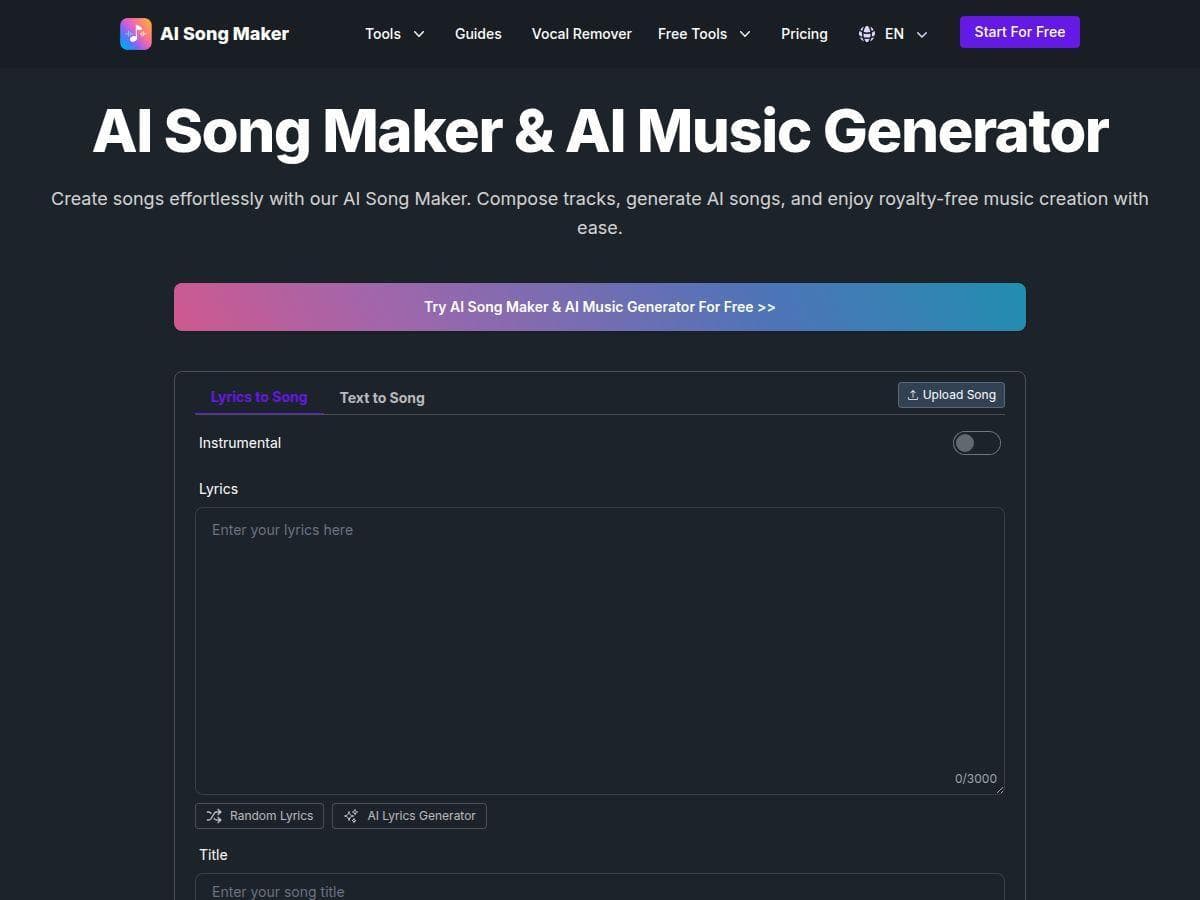Table of Contents
So, you’re on the hunt for a Book Bolt alternative. I get it; finding the right tools to bring your publishing dreams to life without breaking the bank or hitting a learning curve wall can be quite the task. Especially when you’re diving into the world of Amazon KDP, you want something that’s just right for you.
Here’s the deal: Book Bolt is a fantastic resource for many, but it might not fit everyone’s needs or budget. Whatever the case, the search for the perfect tool can feel a bit like finding a needle in a haystack.
But don’t worry, I’ve been down this road, and I’m here to help guide you through it. We’re going to explore some great alternatives that could match what you’re looking for, from design capabilities to keyword research, all to make your self-publishing journey a bit smoother. Let’s dive in and see what’s out there.
Book Bolt Alternative

So, we’re looking into options that could stand in for Book Bolt, right?
It’s all about finding tools that fit just what you need, whether it’s for brainstorming those genius book ideas with a bit of AI flair, digging deep with keyword research, or getting those designs to look sharp.
Top AI Powered Alternatives
Ever thought about having a bit of AI magic to help with your book projects?
We’re talking about tools that can give you a hand with creating content, sorting out ideas, or even figuring out what your next book could be about. Pretty handy, right?
1. AI Automateed
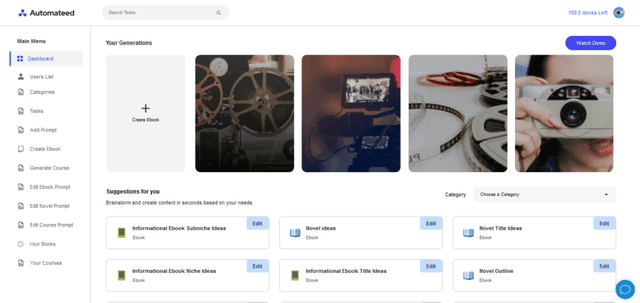
Starting with AI-powered tools for content creation, let’s take a look at AI Automateed. This tool is like a dream come true for anyone who’s ever said, “I want to write a book, but where do I even start?”
AI Automateed is designed to do the heavy lifting, crafting both non-fiction and fiction books with just a bit of input from you.
Features
AI Automateed’s standout feature is its one-click book creation. Give it a title, define your target audience, choose your tone/style, and it whips up an entire book outline—think 15 chapters, each with 3 subchapters.
From there, you have the option to tweak the outline or let the tool run with it, generating a roughly 90-page book complete with a table of contents, all chapters, images, and even a cover.
AI Automateed also offers image creation option where you can give the tool your explanation or idea of what you want to see, and it will create images for you.
From there on, you can go in and edit the images with your name on the cover, name of the book, date, or really anything you want to see on it.
Everything’s original and ready to publish under your name.
If you’re stuck on what to write about, AI Automateed has got your back with its idea generation feature.
It doesn’t just stop at niche and title ideas; it can also help you brainstorm marketing campaigns for social media and beyond, ensuring your book reaches its audience.
Good news is that you can try out the tool for free, but for the paid users, there an option to access a rich database of course content and videos completely free, the value of which surpasses the subscription itself by a lot.
Pros
- Simplifies the book creation process: Takes you from idea to finished product without the typical hurdles.
- Fully automated: From outlines to full chapters and even marketing, it’s got you covered.
- Versatile: Equally adept at handling fiction and non-fiction.
- Customizable: Tailor the content to your preferred style and audience.
- Comprehensive: Delivers a complete package, including images and book cover design.
Cons
- May lack personal touch: While it’s efficient, the content might need your input to add soul.
- Learning curve: Getting the best out of its features might take some tinkering.
- Relies on your guidance: The output is only as good as the input you provide regarding style and audience.
Seeing a coherent book outline appear before my eyes is nothing short of magical. AI Automateed stands as a testament to how far AI has come in supporting content creators.
It breaks down the task of book writing into manageable, automated steps, offering a solid foundation that you can then personalize and refine. While the option to add human touch remains, the tool remarkably finishes the journey from concept to completed manuscript.
Whether you’re a seasoned author or a first-timer, AI Automateed could very well be the sidekick you didn’t know you needed.
2. Designrr
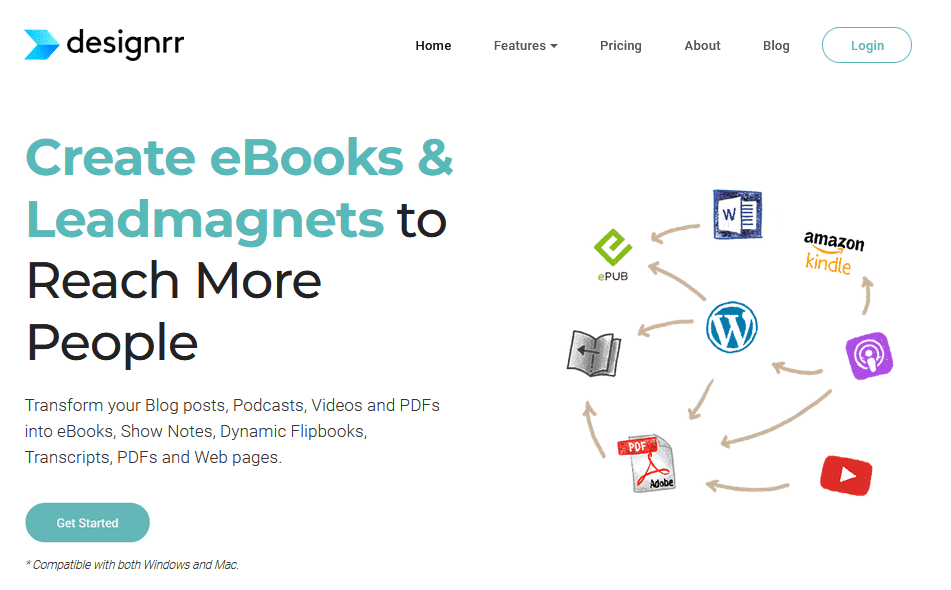
If you haven’t had the chance to check out Designrr yet, you’re in for a treat, especially if the idea of transforming blog posts, videos, or podcasts into professional-looking ebooks or PDFs sounds daunting.
Designrr swoops in like a magic wand for those of us who love creating content but cringe at the thought of diving into complex design work.
Features
Opening Designrr feels a bit like discovering a secret passage in the content creation. First off, the content import feature is a game-changer. You can pull in content from practically anywhere—your blog, Microsoft Word, PDFs, or even directly from a webpage.
Then there’s the template selection. Whether you’re looking to create a lead magnet, an ebook, or a product guide, Designrr offers a variety of templates to get you started.
These templates aren’t just placeholders; they’re beautifully designed, fully customizable starting points that make your content shine.
The drag-and-drop editor is where Designrr really shines. It’s intuitive, meaning you won’t have to spend hours learning the tool.
Want to add images, change text, or tweak the layout? It’s all just a click and a drag away.
One of the coolest features has to be the automatic table of contents generation. Anyone who’s ever manually created a table of contents knows it’s a pain. Designrr automates this process, saving you time and headaches.
And for those working with audio and video content, Designrr allows you to transcribe audio into text, making it possible to turn podcasts or videos into readable content. This feature alone can open up a whole new world of content repurposing possibilities.
Pros
- Simplifies the ebook creation process: Makes it easy for anyone to turn content into professional-looking ebooks.
- Diverse import options: Bring in content from almost any source.
- Wide range of templates: No matter your project, there’s a template for it.
- User-friendly design tools: Customization is a breeze with the drag-and-drop editor.
- Audio and video transcription: A unique feature that enhances content repurposing.
Cons
- Learning curve: Despite its ease of use, getting the hang of all the features might take a bit.
- Subscription-based: Unlike some basic tools, Designrr requires a subscription for full access.
- Can be overwhelming: With so many features, it’s easy to get lost in the possibilities.
I used Designrr to turn a series of blog posts into an ebook as a lead magnet for my website. Honestly, I was dreading the process, expecting it to be complicated and time-consuming. To my surprise, Designrr made it straightforward and, dare I say, fun.
The ability to import my posts directly, choose a template, and then tweak it to match my branding was a smooth experience.
For those looking to dive into creating ebooks or PDFs without wanting to get bogged down by complex design software, Designrr is a stellar choice. It strikes a fine balance between offering powerful features and maintaining user-friendliness.
Yes, there’s a subscription cost, and yes, there might be a bit of a learning curve. But the time and effort it saves you in the long run could make it a worthwhile investment for your content strategy.
Whether you’re a seasoned content creator or just starting out, Designrr has the potential to streamline your workflow and elevate your content.
3. Ebookmaker.ai

Next up, we’ve got Ebookmaker.ai. For anyone who’s ever thought, “I wish I could turn all this content into an ebook without spending countless hours on it,” well, Ebookmaker.ai is like hearing your wishes were actually reasonable requests.
It’s all about leveraging AI to streamline ebook creation, making the process faster and less of a headache.
Features
The standout feature of Ebookmaker.ai is its AI-driven content creation. You’re not just manually piecing together your ebook; you have AI assistance to help generate and organize your content.
Imagine inputting a topic and getting a well-structured outline or even full sections of content ready to be polished and used.
Then there’s the design automation. Ebookmaker.ai doesn’t just stop at content; it helps you with the design aspect too.
With a selection of templates and AI recommendations for layout and design, your ebook starts to look professionally made without you needing to fiddle with every little detail.
The formatting and conversion tools are a lifesaver. Anyone who’s tried to manually format an ebook knows the pain of ensuring it looks good on all devices.
Ebookmaker.ai simplifies this by automatically formatting your ebook for a variety of platforms, making sure it’s ready to publish on Amazon, Apple Books, or any other major ebook retailer.
Integration with content sources is another cool feature. You can pull in content from blogs, websites, or documents, and Ebookmaker.ai will help integrate it seamlessly into your ebook project. This makes repurposing existing content incredibly straightforward.
Pros
- Saves time with AI content creation: Perfect for getting your ebook draft going.
- Simplifies design and layout: Makes your ebook look good without the design skills.
- Automates formatting: No more headaches about device compatibility.
- Easy content integration: Bring in content from various sources effortlessly.
- User-friendly: Despite the advanced features, it’s easy to navigate.
Cons
- AI limitations: Sometimes the content might need a personal touch to feel authentic.
- Learning curve for advanced features: Getting the most out of the tool can take some time.
- Subscription model: Access to the best features comes at a recurring cost.
I experimented with Ebookmaker.ai for a project that had been on the back burner because I dreaded the formatting and design phase.
The AI-generated content feature gave me a solid foundation to work from, and the automated design suggestions actually made the whole thing look better than I expected. It felt like having a co-pilot for the entire ebook creation process.
Ebookmaker.ai stands out as a powerful ally in the ebook creation process, especially if you’re tight on time but big on ideas. Its AI-powered features tackle the heavy lifting of content creation, design, and formatting, freeing you up to focus on refining and perfecting your ebook.
While the AI’s output might occasionally require a human touch, and there’s a cost for premium features, the efficiency and ease of use could make it a worthwhile investment for content creators and writers looking to expand into ebooks.
Top Alternatives for Keyword Research and Analytics
Now, onto the brainy stuff. Keywords are like the secret sauce to getting noticed on Amazon.
We’ll look at some tools that are all about finding the right words to help people find your book. It’s like detective work, but for publishing.
1. Publisher Rocket
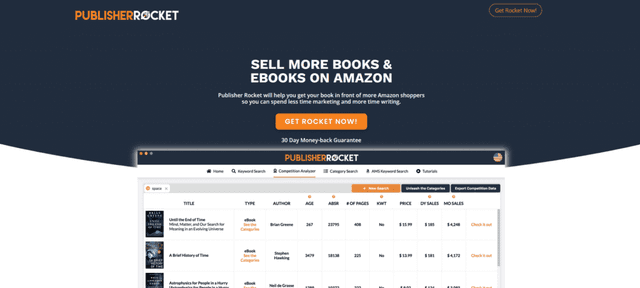
Publisher Rocket is a tool for those of us trying to get our books out there on Amazon and noticed by actual people.
If you’ve ever felt like you’re just guessing what keywords to use or what category to list your book under, Publisher Rocket makes those headaches go away.
Features
Publisher Rocket is pretty straightforward. It helps you find keywords that real people are searching for on Amazon.
You type in a word related to your book, and it spits out a list of related terms, complete with how many people are looking for those terms and how stiff the competition is.
It’s not just about keywords, though. Publisher Rocket also helps you analyze your competition. It shows you other books that are ranking for your keywords, what their sales look like, and even estimates how much money they’re making. It’s like being able to peek over the shoulder of your competitors.
Choosing the right category can feel like a shot in the dark, but Publisher Rocket offers a list of categories and subcategories, showing you exactly how many books you need to sell to hit the number one spot.
Then there’s the AMS keywords feature, which is super useful if you’re dabbling in Amazon ads. It gives you a huge list of keywords to help your ads reach the right audience, which can be a major boost to your book’s visibility.
Pros
- Find keywords easily: Takes the guesswork out of what readers are searching for.
- Spy on the competition: See what’s working for others in your niche.
- Pick the right category: Helps you understand where your book fits best on Amazon.
- Boost your ads: Provides a solid list of keywords for Amazon advertising.
- One-time payment: Pay once, use forever. No subscriptions or hidden fees.
Cons
- Bit of a learning curve: Might take a little time to get used to all the features.
- Initial cost: There’s an upfront payment, which could be a barrier for some.
- Focused on Amazon: Mainly useful if you’re selling there, not as much for other platforms.
I decided to give Publisher Rocket a shot when I was getting ready to launch my latest novel. Honestly, the keyword and competition analysis features were a game changer for me.
It felt like I was finally able to speak the language of my potential readers. No more throwing things at the wall to see what sticks.
For anyone serious about cracking the Amazon market, Publisher Rocket is like having a secret weapon. Sure, there’s a bit to learn at the start, and the cost upfront is something to consider, but the insights and data it provides could really make a difference in getting your book in front of the right eyes. It’s made a pretty big difference for me, and it might just do the same for you.
2. KDSPY
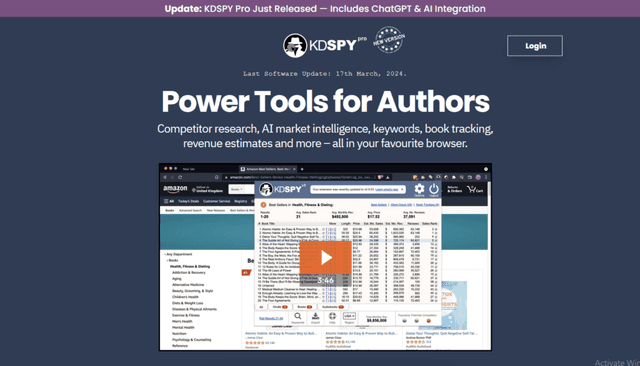
Have you heard about KDSPY? It’s this handy tool for anyone trying to make sense of what’s going on with Amazon’s Kindle marketplace. Basically, if you’ve ever felt lost trying to figure out keywords or what your competition is doing, KDSPY is like a flashlight in a dark room.
Features
KDSPY is straightforward with its features, which is a relief. You get a keyword research tool that’s all about showing you what people are searching for on Amazon. It’s not about guessing anymore; you see real data on what potential readers want.
Then there’s the competition analysis. This part is pretty cool because you can peek at other books that are ranking for the keywords you’re interested in.
KDSPY shows you their sales numbers, estimated earnings, and even how many reviews they’ve got. It’s like getting a behind-the-scenes look at what you’re up against.
Choosing categories with KDSPY becomes less of a headache, too. It helps you find categories where your book could shine, showing you how many books you need to outsell to hit that coveted #1 spot.
Pros
- Super intuitive: It’s really user-friendly, even if you’re not a data geek.
- Saves tons of time: Quickly find keywords and understand the market.
- Helps with strategic planning: Know where your book stands the best chance of shining.
- Direct data from Amazon: It’s like getting insider info legally.
- One-time payment: No subscriptions to worry about. Pay once, and it’s all yours.
Cons
- Focused on Amazon: Great for Kindle authors but less so if you publish elsewhere.
- Can be addictive: You might find yourself spending hours on market research.
- Requires Google Chrome: It’s a browser extension, so you need Chrome to use it.
I used KDSPY when launching my latest cookbook. Being able to pinpoint the right keywords was a game-changer. Instead of wondering if I was hitting the mark, I had actual data to guide my decisions. It felt empowering, honestly.
KDSPY is a solid tool if you’re navigating the Amazon Kindle waters and want a clearer path. It strips away the guesswork of keyword selection and competition analysis, making it easier for you to focus on getting your book in front of the right eyes.
Sure, it has its downsides, like being pretty Amazon-centric and a bit overwhelming for newbies. But for the clarity and time-saving benefits it offers, it’s worth considering in your self-publishing arsenal.
3. KeywordTool.io
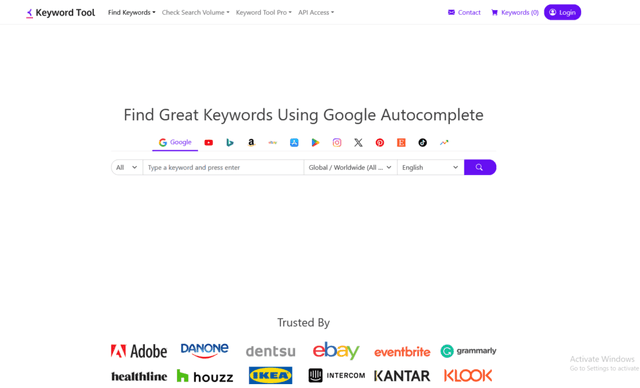
Let’s move on to KeywordTool.io. If KDSPY is your go-to for diving deep into Amazon’s ecosystem, KeywordTool.io is like having a Swiss Army knife for keyword research beyond just Amazon.
Whether you’re planning for your next blog post, YouTube video, or indeed your next book, this tool can be pretty handy.
Features
The heart of KeywordTool.io lies in its ability to generate a ton of keyword ideas. Just type in a seed keyword, and boom, you get a list of related keywords, including questions and variations that real people are searching for across different platforms like Google, Bing, YouTube, and yes, Amazon too.
What sets KeywordTool.io apart is its Google Autocomplete enhancement feature. This means it uses Google’s own autocomplete data to find commonly searched terms.
This can give you insights into what your potential audience is curious about or problems they’re looking to solve.
Another cool feature is its competitor keyword analysis. Just plug in a competitor’s URL, and you’ll see what keywords they rank for. It’s a straightforward way to understand your competition’s SEO strategy.
Pros
- Versatile: Great for keyword research across multiple platforms, not just Amazon.
- Easy to use: The interface is user-friendly, making keyword research less daunting.
- Comprehensive: Delivers a wide range of keyword suggestions, questions, and prepositions.
- Free tier available: You can get started without spending a dime, which is always nice.
- Helpful for content ideas: Beyond books, it’s great for brainstorming topics for blogs, videos, and more.
Cons
- Premium features locked: For the juiciest data, you’ll need to upgrade to the paid version.
- Can feel overwhelming: The sheer volume of keywords generated can be a lot to sift through.
- Focused more on digital content: While useful for book keyword research, it’s geared more towards online content creators.
I gave KeywordTool.io a spin while brainstorming for my blog tied to my book series. The ability to see what questions people were asking around my book topics was enlightening.
It helped not just in refining my book descriptions but also in generating a list of blog post ideas that would attract my target readers.
KeywordTool.io is a robust tool for anyone in the content creation game. Its strength lies in its broad applicability across various platforms and the depth of keyword insights it provides.
While its full power is behind a paywall, even the free version offers enough to get you started on making more informed decisions about your content strategy.
Whether you’re an author, blogger, or YouTuber, it’s worth exploring to enhance your keyword research process.
4. Amazon Suggestion Expander
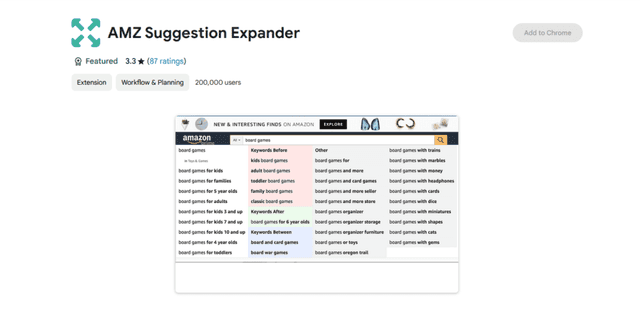
Ever found yourself typing into the Amazon search bar, wondering if there’s a better way to uncover what readers are actually looking for?
That’s where Amazon Suggestion Expander comes into play. It’s a simple yet effective tool that gives you a peek into the minds of your potential readers.
Features
Amazon Suggestion Expander hooks right into the Amazon search bar. Start typing a keyword related to your book, and it does its magic by expanding the list of auto-suggested search terms.
What’s great about this tool is its simplicity. There’s no complicated setup or learning curve. It’s all about giving you more ideas right where you need them.
Plus, seeing a wider array of search suggestions can spark ideas for keywords you might not have considered, making your book more discoverable.
Pros
- Straightforward to use: It’s as easy as searching on Amazon because that’s exactly what you’re doing.
- Expands keyword possibilities: Offers up suggestions you might not have thought of on your own.
- Free: This is the best part. More insights at no extra cost.
- Great for brainstorming: Helps you think outside the box when optimizing your book’s keywords.
- Directly integrated into Amazon: No need to juggle between tools; it’s all right there on the search page.
Cons
- Limited to Amazon’s search bar: Works great on Amazon but nowhere else.
- Can be a bit basic: If you’re looking for deep analytics, this isn’t that kind of tool.
- Browser-specific: Last I checked, you need to be using Chrome to add this as an extension.
I stumbled upon Amazon Suggestion Expander when I was trying to fine-tune the keywords for my latest fantasy novel. It was like suddenly having a wider lens on what potential readers were searching for, giving me ideas for keywords that hadn’t even crossed my mind.
It didn’t cost me a penny, and the simplicity of just seeing more options as I typed was surprisingly helpful.
If you’re looking for a no-fuss, straightforward way to explore a wider range of keywords directly on Amazon, the Amazon Suggestion Expander is worth a look.
It’s not going to dive deep into analytics or give you sales predictions, but it will broaden your keyword horizons right where it matters. And hey, for a tool that’s free and easy to use, it’s a handy little addition to your self-publishing toolkit.
Top Alternatives for Design and Template
And finally, we can’t forget about making your book look good. Design’s not just about pretty covers; it’s about grabbing someone’s attention and not letting go.
We’ll check out some tools that can help you do just that, no matter your design skill level.
1. Canva
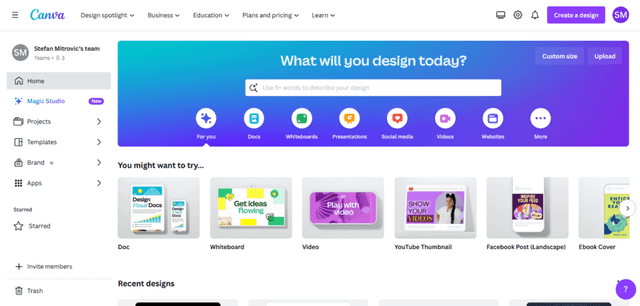
First up is Canva. If you haven’t stumbled upon it yet, it’s basically this super user-friendly design tool that’s been a game-changer for folks like me who aren’t exactly Picasso but still want to create something that doesn’t look half-bad.
Whether you’re whipping up a book cover or jazzing up your social media, Canva’s got your back.
Features
When you open up Canva, it’s like walking into a candy store for design. First off, the sheer number of templates is mind-blowing.
You’ve got everything from Instagram posts to presentation slides, and yes, tons of book cover designs. And these aren’t just bare-bones layouts; we’re talking about fully fleshed-out designs that you can tweak to your heart’s content.
Then there’s the drag-and-drop functionality. It’s so intuitive that you’ll feel like a design guru within minutes.
You can pick elements, drop them into your project, and adjust everything on the fly. Want to change that font? Easy. Need to swap out a photo for something more dramatic? No problem.
The library of assets is another standout feature. Canva doesn’t just offer a handful of stock photos; it gives you access to millions of images, graphics, and icons. And it’s not just about quantity. The quality is top-notch, which means your project will look crisp and professional.
But Canva isn’t just for solo projects. Its collaboration features are perfect for when you’re working with a team. You can share designs, leave feedback, and make edits in real-time.
Lastly, let’s talk about customization. While Canva is user-friendly for beginners, it also packs enough depth for those who want to dive deeper.
You can upload your own assets, play with advanced photo filters, and even animate your designs. It strikes a perfect balance between being accessible to newcomers and offering enough for the more experienced to get their hands dirty.
Pros
- Super easy to use: Even if you’re not a tech whiz, you’ll find your way around Canva in no time.
- Loads of templates: From social media posts to book covers, they’ve got a template for pretty much everything.
- Free to start: You can do a lot with the free version, which is pretty great if you’re watching your budget.
- Collaboration features: Working on a project with someone? Canva lets you collaborate on designs easily.
- High-quality exports: The final product looks professional, even if you’re a beginner.
Cons
- Pro version needed for the best features: Some of the cooler features are locked behind the Pro version.
- Can be overwhelming: With so many options, it’s easy to get lost if you don’t know what you’re looking for.
- Limited customization for advanced users: If you’re a design pro, you might find Canva a bit limiting.
I’ve used Canva for everything from creating quick graphics for blog posts to designing the cover for my first self-published eBook. And let me tell you, it’s been a lifesaver.
I’m not exactly a design expert, so having a tool that guides me through the process and still ends up looking like I know what I’m doing? Priceless.
All in all, Canva is a solid choice if you’re diving into the self-publishing world and need to get your designs in order without turning it into a full-time job. It’s got the balance of ease-of-use and flexibility that makes it ideal for beginners and those who need to churn out professional-looking designs on the regular.
Sure, it’s got its limits, but for most of us, it’s more than enough to get the job done and look good doing it.
2. Book Bird

Next on our list is Book Bird. It’s not just any tool; it’s a lifesaver for anyone looking to dive deep into the self-publishing world, especially if you’re into creating low-content books. Think journals, planners, or coloring books.
Book Bird offers a range of ready-made templates and tools that make designing and publishing these types of books almost too easy.
Features
What sets Book Bird apart is its focus on KDP (Kindle Direct Publishing) interiors. They’ve got a stash of templates that are not only customizable but also targeted towards niches known to sell well. This means less guessing for you and more creating.
Plus, they offer tools that help with everything from niche research to royalty calculations. It’s like having a publishing consultant at your fingertips.
Another cool thing? They keep it updated.
You’re not just stuck with what was trendy two years ago. They’re constantly adding new designs and tools based on what’s working in the market now.
Pros
- Niche-focused templates: Saves you time by offering designs that are already proven to resonate with buyers.
- Easy to use: The platform is straightforward, making it quick to pick up even for newcomers.
- One-time payment: Access everything with a single purchase, no recurring fees.
- Comprehensive tools: Beyond designs, it’s packed with tools for market research, profit calculations, and more.
- Updated content: Regularly refreshed with new templates and tools to keep up with market trends.
Cons
- Limited to KDP formats: Great for Amazon publishers, but if you’re looking to go wide, this might be a constraint.
- Overwhelming options: The range of tools and templates is vast, which can be a bit much for complete beginners.
- Niche-specific: If you’re not into low-content books, some features might not be as useful to you.
I stumbled upon Book Bird when I was toying with the idea of launching a series of planners. Honestly, the thought of designing from scratch was daunting. But with Book Bird, it felt like I hit a shortcut.
The templates were spot on, and the additional tools gave me insights I didn’t even know I needed. It was like unlocking a cheat code for KDP publishing.
If you’re eyeing the low-content book market on Amazon, Book Bird is like finding the right tool at the right time. It offers a mix of simplicity for beginners and depth for those ready to scale, all without the hassle of subscriptions.
While it shines for KDP publishers, its focused approach means it’s not a one-size-fits-all. But for its niche, it’s a solid pick that can save you heaps of time and guesswork.
3. Creative Fabrica
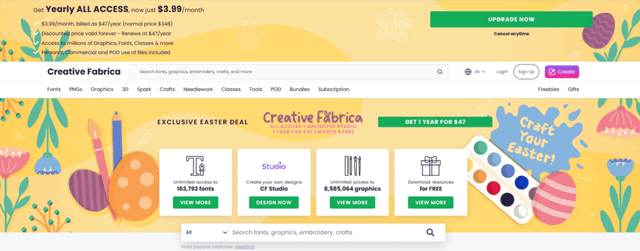
Creative Fabrica pops up on our radar as a haven for designers and publishers alike. It’s like this vast digital marketplace where creativity meets endless resources.
Whether you’re crafting your next bestseller’s cover or need that perfect font that screams “read me,” Creative Fabrica has got something for everyone.
Features
One of the standout features of Creative Fabrica is its massive library of digital assets. We’re talking about millions of graphics, fonts, templates, and more.
Imagine needing a specific style or theme for your book’s interior or cover and finding exactly that, plus more options you didn’t even consider, all in one place.
Then, there’s the Fonts & Graphics Subscription. It’s a goldmine for anyone in constant need of fresh, high-quality designs and fonts.
This subscription gives you unlimited access to their vast collections, making it a no-brainer for regular content creators.
Craft Club is another unique feature that sets Creative Fabrica apart. It offers access to exclusive craft resources, tutorials, and a community of like-minded creators. It’s perfect for those who not only publish but also delve into other creative projects.
The POD (Print on Demand) Subscription is a game-changer for anyone looking to sell on platforms like Etsy, Amazon, or even your own site. It provides commercial licenses for a huge range of designs, so you can sell products with these designs worry-free.
Lastly, Creative Fabrica’s Tools section offers handy resources like a Webfont Generator and a Shape Cloud tool, making it easier to bring your unique design ideas to life without needing complex software.
Pros
- Unrivaled variety of assets: From fonts to SVGs, they’ve got it all.
- Flexible subscription options: Pay for what you need, whether it’s fonts, graphics, or POD assets.
- Community and tutorials: Not just resources, but also guidance and support.
- Commercial licenses: Makes it safe and legal to sell your creations.
- Regular updates: New assets are added daily, keeping the library fresh.
Cons
- Subscription costs: Can add up if you need multiple subscriptions for different assets.
- Overwhelming choices: The sheer volume of resources can be daunting for some.
- Learning curve: Maximizing what Creative Fabrica offers can take some time to navigate and learn.
I dipped into Creative Fabrica when I was exploring options for my series of children’s books. The need for quirky fonts and unique graphics was high on my list, and boy, did Creative Fabrica deliver.
Not only did I find exactly what I needed, but I also stumbled upon resources that elevated the project beyond my expectations. It felt like every creative roadblock I hit, Creative Fabrica had a solution ready to go.
Creative Fabrica stands out as a powerhouse of creative resources, ideal for self-publishers and designers looking to elevate their work.
With its vast collection of assets and helpful community, it’s a platform that can transform your creative projects from good to incredible. While the cost and variety might be overwhelming for some, the value it brings to the table is undeniable.
Whether you’re a seasoned designer or just starting out, Creative Fabrica is a resource worth exploring.
Conclusion
Exploring the right Book Bolt alternative means diving into tools that offer a blend of efficiency, creativity, and ease of use, tailored to the unique needs of authors and content creators. Whether it’s crafting the perfect design with Canva, uncovering key market insights with KDSPY, or leveraging AI to automate the writing process with tools like Ebookmaker.ai and AI Automateed, there’s a spectrum of possibilities waiting to be discovered.
Choosing the best Book Bolt alternative comes down to aligning with your specific project goals, whether that’s enhancing your book’s visual appeal, optimizing for searchability, or streamlining content creation. Each tool brings something unique to the table, making it easier for authors to turn their visions into reality, engage their target audience, and ultimately, achieve publishing success.

